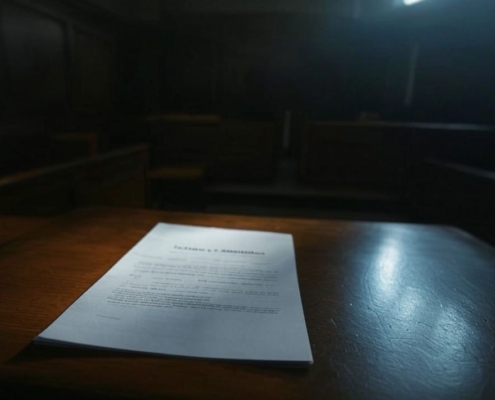What is the definition of a ledger?
All of a business’s confidential financial information is recorded in a ledger, which is also called the second book of entry. The ledger documents transactions as credits and debits in various accounts. An operational company’s general ledger is a record of all financial transactions that occur during the life of the business.
All of the following are included in it: liabilities, assets, owners’ equity, income, and expenditures. Listed in the ledger are all of the active accounts. Financial statements cannot be prepared without the full inventory of accounts, often known as the chart of accounts. Additionally, it is necessary for auditing.
The General Ledger and Its Significance in Accounting
In order to provide reliable financial estimates, statements, and forecasts that stakeholders like funders, prospective purchasers, auditors, and company and financial executives rely on to assess the company’s health, accurate and comprehensive data is crucial.
An auditor or accountant can use a general ledger to trace inconsistencies down to their source by examining specific journal entries.
A General Ledger and Its Components
Looking closely at the parts of a company’s general ledger is necessary to fully grasp its financial situation. The GL is as complete and exhaustive as it is because of a number of key components. The following is an organized breakdown of the main parts:
1. Different Categories of General Ledger Accounts
For the purpose of keeping track of and managing financial data in an organized manner, the general ledger classifies accounts. In the general ledger, you will find the following primary kinds of accounts:
- Portfolio of Assets: These are the things that the business has that might be worth money in the future. Money, receivables, inventories, and physical assets (such as buildings and machinery) are all examples.
- Liability Accounts: These show the debts or obligations that a company has to other businesses. Various financial obligations, such as accounts payable, loans, and bonds, are examples of common liabilities.
- Equity Accounts: These accounts reveal information about shareholders’ ownership stake. Common equity accounts consist of additional paid-in capital, retained earnings, and common stock.
- Operating Revenue Accounts: These accounts record the money that comes in from the main things that a business does, including selling products or providing services. Revenue accounts provide valuable information about the activities that generate earnings for a company.
- Operational Expense Accounts: These keep track of all the money spent on running the business. All operational expenditures, such as rent, utilities, wages, and depreciation, fall under this category.
- Non-operating revenue accounts: These are for money that a business makes from things other than its main operations. For example, it might make money from investments or sell resources and make a profit.
- Non-Operating Expense and Loss Accounts: Non-operating expenses are business costs unrelated to a company’s primary activities, much as non-operating revenues. Payments for interest or other one-time losses from situations like reorganization or charges on outdated goods would fall under this category of accounts.
The essential financial statements of a business are built around these account types. Income statement accounts comprise both operational and non-operating revenues and costs, whereas the balance sheet records assets, liabilities, and equity.
2. A Double-Entry Bookkeeping System Based on Debits and Credits
Debits and credits are the fundamental building blocks of contemporary accounting. Both of these parts work together to create a balance in a company’s finances, and understanding the general ledger’s intricacies requires a solid grasp of both. Debits and credits, at their most fundamental, are only the two sides of a whole transaction. They are the language of accounting, outlining how transactions affect the general ledger’s accounts.
Its ability to maintain its own equilibrium is the crowning glory of the double-entry system. The accounting equation (Assets = Liabilities + Equity) cannot be out of balance, so it is imperative that all debits equal all credits for every single transaction. The double-entry system ensures that the financial data is accurate and complete by reducing the likelihood of human mistake.
Using the framework of debits and credits, the general ledger will record all of a company’s transactions. Posting journal entries, which are the building blocks of GL entries, changes the amounts in those accounts. These debits and credits add up over time to form the stories told by financial statements.
3. Account Balances
The sum total of all funds available in an account as of a specific date is known as its balance. It is based on the sum of all transactions that have taken place in that account from the beginning of the accounting period or the account’s opening. In order to create accurate financial statements, it is necessary to know the current balance of each account. A “debit balance” exists when the amount of debits exceeds the amount of credits, and a “credit balance” exists when the opposite is true.
Consider the balance sheet, which shows the exact amounts in the equity, liability, and asset accounts. You may think of the income statement as a combination of the revenue and expense accounts.
Stakeholders may learn a lot about a company’s liquidity, performance, and financial health by looking at its account balances. As an example, if the cash account balance is decreasing, it may mean that the company is having trouble meeting its financial obligations. However if the revenue account balance is growing, it could mean that the firm is doing very well.
It is critical to reconcile account balances on a regular basis, particularly for critical accounts like cash. This procedure checks for accuracy and inconsistencies to make sure the recorded balances match external data (such as bank statements).
In order to provide assurance, auditors check account balances thoroughly. They check that the balances have been recorded accurately and in accordance with accounting principles and standards, as well as their legality and compliance.
4. Chart of Accounts
The Chart of Accounts is an integral part of the general ledger; it provides a framework for categorizing, organizing, and displaying the many financial accounts that comprise the transactions and positions of a company.
The CoA is essentially a catalog of all the ledger accounts that a company uses for its activities, organized in a standardized way. It’s the plan that the general ledger follows while recording transactions. To help with data administration and easy reference, the chart uses a unique identifier—typically a number—for each account.
Assets, liabilities, equity, income, and costs are the usual building blocks for a CoA’s account classifications. Examples of subcategories that could arise from these primary groups are short-term assets, long-term obligations, and so on. Particular accounts, including cash, receivables, common stock, revenue from sales, and rent cost, are detailed within these broad categories.
In many respects, the CoA and the GL are bound together. The CoA gives a structured listing of accounts, while the GL has the actual entries for debits and credits that go along with those accounts. They give the whole picture of a company’s financial dealings and standing when taken as a whole.
The Four Primary Roles of the General Ledger
For precise and effective financial administration, the general ledger is indispensable, serving a wide variety of purposes. It is the backbone that guarantees a company’s financial stability; its function goes beyond simple record-keeping.
1. Thoroughly Documenting All Financial Deals
The general ledger (GL) is the repository for all monetary transactions, including purchases, sales, payments, and receipts. No transaction will fall between the cracks since it records them in a structured and chronological order. The general ledger (GL) records all monetary transactions, which form the foundation for further accounting reports and analysis.
2. Acting as a Hub for Accounting Records
There is no longer any need to manually search through several documents because the GL has consolidated all financial data. It makes it easier to evaluate financial records and makes it easier to get relevant information. Due to its importance, the GL is usually built with strong protections to avoid unauthorized changes, guaranteeing that financial data is pure and dependable.
3. Making Financial Statements Easier to Compile
- Income Statement: The GL helps in figuring out how profitable a business was over a certain time by combining accounts for income and expenses.
- Balance Sheet: This section takes a look at a company’s current financial situation by combining the amounts of its asset, debt, and equity accounts.
- Cash Flow Statement: The General Ledger (GL) helps create this statement by keeping track of cash-related transactions. It details the cash that comes in and goes out from operating, investing, and financing operations.
4. Helping Out with Audit and Compliance Tasks
The GL is a key reference for auditors due to its comprehensive and clear record of transactions, which allows for a more efficient and accurate audit. Many companies, particularly those in regulated industries, rely on the GL to store their financial data in accordance with precise standards, which helps them comply with legal and regulatory requirements.
Although it is a cornerstone of accounting, the general ledger serves several purposes. It’s the guarantor and guidepost for all of a company’s financial dealings and choices. The GL is an indispensable tool for the orchestration of good financial management because of the careful execution of its many duties.
The Function of a General Ledger
A company’s accounting system would not be complete without the general ledger, which acts as the hub for all monetary transactions. For reliable financial reporting and meaningful company analysis, it must operate well. A general ledger works in this methodical way:
- Writing Down Transactions: The general ledger’s main job is to keep track of all the money that the company spends and earns. The initial step in the double-entry accounting system is to record these transactions in journals, which will record the debit and credit sides of the transaction.
- Sorting Data: After events are recorded, they are put into different groups, like assets, equity, liabilities, revenues, and costs. This categorization makes sure that data is structured in a way that makes it easy to find or examine.
- Posting: Following classification, the information retrieved from the journal entries is “posted” to the corresponding accounts in the general ledger. By standardizing data, this method provides organizations with a bird’s-eye perspective of all account activity.
- Trial Balance Preparation: A trial balance is taken from the general sheet every so often. To verify that all accounts are in balance, this step involves totaling the debit and credit entries for each. Inconsistencies mean something is wrong and needs fixing so the financial accounts are correct.
- Adjusting Entries: Some entries may need to be changed at the end of a financial period to account for things that haven’t been logged yet, like costs or cash that have been accumulated. These adjusting entries guarantee that the ledger accurately portrays the company’s financial status and performance.
- Preparing Financial Statements: The general ledger is the first step in creating the income statement, balance sheet, and cash flow statement for a business. It records, categorizes, posts, and adjusts all of the company’s activities.
- Review and Audit: The general ledger is a main source of information during both internal and external audits because it has all of a company’s financial information. In order to ensure that financial data is accurate and complete, auditors utilize the GL. The general ledger is a crucial tool for maintaining honesty, precision, and conformity in accounting records.
The general ledger is the backbone of any financial system, guaranteeing that all financial reports are accurate, transparent, and in accordance with regulatory requirements. For a company to have strong finances and make smart decisions, the GL must be well-managed and regularly updated.
Keeping a General Ledger Current and Accurate
It is the job of the general ledger to keep track of all of a company’s financial dealings. To guarantee a transparent and honest depiction of a company’s financial health, its proper upkeep and prompt updates are crucial.
1. Journal Entries
The first thing that accountants do while keeping track of money is to create journal entries. You can usually find the date, the accounts that will be impacted, the amounts that will be debited or credited, and a brief summary of each entry. These entries document every financial event as it happens, providing a chronological record. These operations lay the groundwork for all the others in accounting, including posting to the general ledger.
2. Posting: Moving Journal Data to the GL
Posting journal entries to their corresponding general ledger accounts is the next step after journaling a transaction. Posting allows for a more comprehensive picture of each account’s activity and balance by aggregating data from individual transactions. This is a necessary measure to keep the GL current and accurate in recording all company transactions.
3. Trial Balance: Verifying Accuracy and Resolving Inconsistencies
A trial balance is a record that details the debit and credit amounts of all the ledger accounts as of a certain date. The main goal is to make sure that the total debits are equal to the total credits, which means that the double-entry accounting principle is being followed. In the event of a mismatch in the trial balance, it is imperative that all posting and journaling processes be carefully reviewed and corrected.
Why and How to Change Entries
It takes time to record and report every financial transaction. A more accurate reflection of the real economic impact may need modifications to some activities, such as accumulated costs or prepaid revenues.
- Accrued Expenses: An adjusting entry is used to report a cost in the right period when a company has used a service (such as utilities) but hasn’t been invoiced by the end of the month.
- Prepaid Revenues: An adjustment entry will be used to recognize the revenue as it is collected over time if a client pays in advance for services that will be performed in the future.
By adjusting entries, we may be sure that the financial statements accurately reflect the period’s financial operations and that they follow the accrual accounting concept. The faithful upkeep and revision of a general ledger ensures that a company’s financial records are accurate and reliable. Businesses may guarantee they provide informative and compliant financial statements by learning and following each step, from recording transactions in the journal to making any required changes.
The Seven-Step Procedure for Reconciling the General Ledger
One of the most important steps in closing the books is reconciling the general ledger. To ensure the accuracy of general ledger entries, accounting teams should reconcile account balances with supporting documentation, including monthly bank statements, on a regular basis.
Locating and fixing inconsistencies requires comparing GL account balances with third-party data or statements. Businesses may ensure that their financial statements accurately reflect their financial situation by following this approach.
For the sake of keeping mistakes from adding up, businesses should regularly reconcile the general ledger using the following steps:
1. Preparation
- First things first: Collect any relevant financial paperwork, such as receipts, invoices, bank statements, and any other necessary external data.
- Get into the GL: Log in to the GL securely to enter the amounts and details of transactions for the accounts that need to be reconciled.
2. Comparison
- Pair Up Transactions: Locate the general ledger entry that corresponds to each transaction in the external document. When you’re trying to settle financial accounts, it’s a good idea to check each transaction on your bank statement against the entries in the ledger.
- Find inconsistencies: Draw attention to any discrepancies between the general ledger and external records, such as blanks, different amounts, or the incorrect account for a transaction.
3. Investigation
- Examine Disparities: Look closely at any differences to find out what caused them. To achieve this, it may be necessary to study transaction paperwork, communicate with appropriate departments or individuals, or both.
- Conflicts: Typical causes of discrepancies include mistakes in data input, inconsistencies in time (such as pending checks in bank reconciliations), or failure to record a transaction. If valid disparities are discovered that are not caused by timing variations, then journal entries should be prepared to update the general ledger accordingly.
4. Adjustment
- Journal Adjusting Entries: Create journal entries to modify the GL in accordance with any valid errors discovered that are not the result of timing inconsistencies.
- Documentation: Make sure that any changes are well documented, explaining why the change was done and citing any evidence that supports it.
5. Verification
- After making any necessary adjustments, it is advisable to run a new trial balance to verify that the books remain balanced. This means that the total debits should match the total credits.
- Verify: Verify once again that the reconciliation has been successful by comparing it to the external record.
6. Review and Documentation
- Create Comprehensive Reconciliation Reports: Outline all aspects of the process, from the original discrepancies to the final reconciled balances, including the investigation, modifications, and reports.
- Review by a Boss: For extra control and confirmation, reconciliations should ideally be looked over and signed by a boss or a different team member.
7. Regular Check-ins
- Regular Reconciliations: Figure out how often the reconciliations should happen based on the type and number of transactions (for example, once a month, three times a year). It may be necessary to reconcile more important accounts, such as cash, on a daily or monthly basis.
- Constant Observation: Set up mechanisms to detect any problems as they arise, allowing for prompt resolutions.
To keep a company’s finances in order, the general ledger reconciliation procedure is essential. Businesses may win over stakeholders’ trust and meet audit and regulatory standards by making sure it faithfully depicts actual financial dealings. It’s a painstaking procedure, but it protects the company from any financial fraud when executed correctly.
The Importance of a General Ledger for Businesses
Businesses that keep meticulous records are more likely to be audit-and valuation-friendly, as well as to be able to shed light on their financial health. The accounting process relies on an accurate and comprehensive general ledger.
- Accuracy in financial transactions: A general ledger is utilized to document a company’s transactions and statistical data. Certain systems that utilize unified data models link these transaction details to order, customer, and inventory information. Business needs, such as inventory purchases, product pricing, and financing, may be better planned with this data in hand.
- Keeping books balanced: The primary function of a general ledger is to guarantee that the financial records are balanced. By using the trial balance, accountants may detect and correct errors and fraudulent actions before they worsen.
- Streamlined tax filing: Accurate bookkeeping is critical for ensuring that a firm is paying for the insurance and permits that are required for tax compliance. In order for the company to create informed financial estimates and plans, it is crucial that all financial information be accurate. It provides the company with the specifics required by tax regulations and serves as evidence in the event of an audit by the Internal Revenue Service.
- Preventing and detecting fraud: Accurate record-keeping allows businesses to spot suspicious financial activities and fix them before they escalate.
- Comprehensive financial picture: The GL brings together all of a business’s financial transactions, giving a full picture of its money over a range of time periods. It’s the starting point for creating balance sheets that show the assets, liabilities, and equity of a company as of a specific date. The GL provides a wealth of information that helps companies analyze their operational achievements and failures, including revenue patterns, cost structures, profitability measurements, and more.
- Making strategic plans and decisions: The general ledger gives businesses the information they need to expand their financial and strategic reach. The financial insights from the GL are vital for any decision-making process, including new product launches, operations scaling, and cost management. Additionally, companies may foresee potential financial risks, including falling revenues or rising obligations, and take measures to lessen or eliminate them. With the general ledger’s historical financial data at their disposal, companies may more accurately prepare for the future by predicting potential financial outcomes.
- Ensuring openness and responsibility: All financial transactions can be tracked back to their source, making them easy to understand and audit. Both internal and external audits and reviews rely heavily on this idea of traceability. Businesses in several sectors are required to follow specific financial guidelines, and the general ledger makes sure they do so and can easily produce the paperwork that’s needed to prove it.
All parties involved in a company’s financial life cycle—creditors, investors, and customers—benefit from clear and honest financial reporting. This illustrates the company’s dedication to transparency and moral financial management.
Three Issues with the General Ledger
Despite its obvious importance, GL management is not without its difficulties. Finance experts face a myriad of challenges in today’s dynamic corporate environment, many of which threaten the precision and dependability of this vital accounting instrument. Here we will take a closer look at the most common problems with GL management:
1. Supervision and Human Errors
The potential for human error exists even among the most careful experts. It is possible to jeopardize the integrity of the ledger due to mistyped figures, missing entries, or incorrectly categorized transactions. The general ledger (GL) management process includes periodic checks and reconciliations. Nevertheless, disparities in finances might arise from failing to notice irregularities or incorrectly interpreting data.
2. Advanced Financial Deals and Reporting Requirements
Both national and international accounting standards are in a constant state of flux. Maintaining GL alignment while keeping up with these modifications may be quite a challenge. Complexity abounds in some financial dealings, such as those involving mergers, acquisitions, or currency exchange. Expertise and painstaking precision are required to account for such intricacies in the GL correctly.
3. Possible Instances of Fraud and Abuse
A genuine worry is the likelihood of internal fraud, which can manifest itself in a variety of ways, including altered records and illegal transactions. These kinds of things can make the GL less reliable and damage confidence among stakeholders. The GL might be at risk of abuse or external attacks because to insufficient security mechanisms or access constraints.
Mastering the art of general ledger management calls for a combination of knowledge, alertness, and technology. By anticipating and mitigating these risks, companies can keep their financial information secure and make sure the GL is a solid foundation for their financial plan.
What makes a journal different from a ledger
All transactions—aside from payroll, payments, and receipts—are documented in a journal. Each entry in the journal must have a brief description, the date, and the account that is to be debited or credited with the specified amount. The journal is where information is first written down.
The journal, often called the book of original entry or primary book of accounting, is a double-entry system that summarizes financial activities. Journalizing is the practice of recording entries. There is no room for balance in a diary, thus the transactions are recorded in chronological order for convenience.
In the ledger, which is also called the principal book of accounting, the balance for each line is recorded using the fundamental “T-account” format, which comprises the information from the journal entry. Posting is the process of moving journal entries to the ledger. To follow the entry format, similar transactions should be grouped into the same account. Both the income statement and the balance sheet are based on the trial balance, which is prepared using this information.
Though they serve different purposes, the journal and ledger both record a large number of transactions. A ledger account, in contrast to a journal, can have an initial balance equal to the closing balance of the prior year, provided that all other factors remain constant.






























